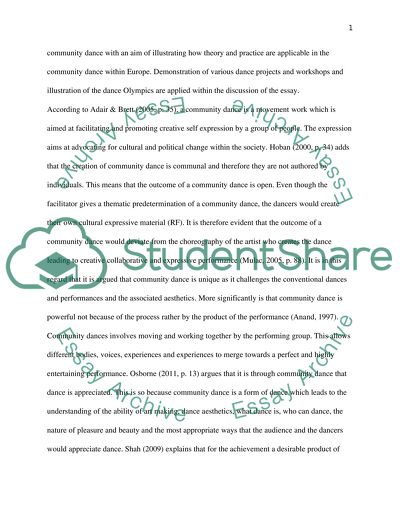Cite this document
(“Community Dance: Theory and Practice Essay Example | Topics and Well Written Essays - 2000 words”, n.d.)
Retrieved from https://studentshare.org/education/1452376-what-do-you-consider-to-be-the-nature-of-community
Retrieved from https://studentshare.org/education/1452376-what-do-you-consider-to-be-the-nature-of-community
(Community Dance: Theory and Practice Essay Example | Topics and Well Written Essays - 2000 Words)
https://studentshare.org/education/1452376-what-do-you-consider-to-be-the-nature-of-community.
https://studentshare.org/education/1452376-what-do-you-consider-to-be-the-nature-of-community.
“Community Dance: Theory and Practice Essay Example | Topics and Well Written Essays - 2000 Words”, n.d. https://studentshare.org/education/1452376-what-do-you-consider-to-be-the-nature-of-community.


